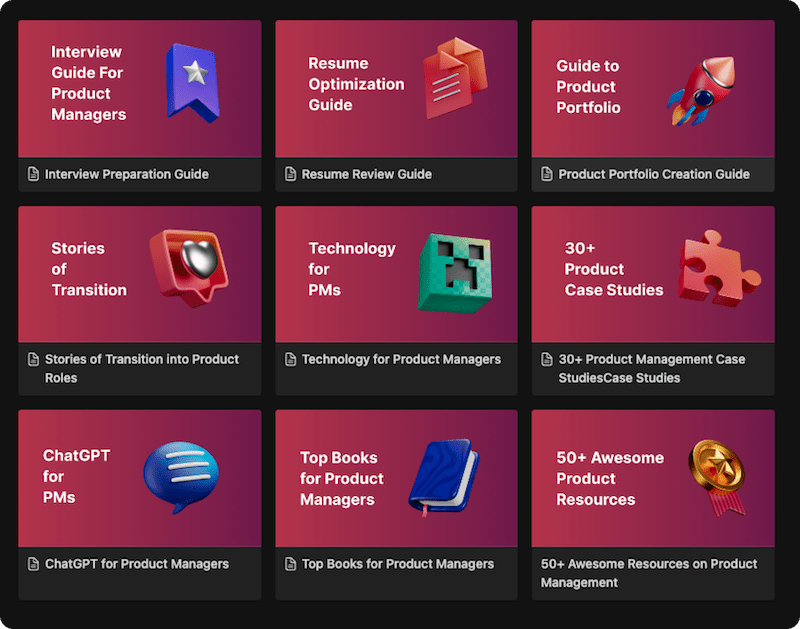Imagine your product team is a kitchen full of world-class chefs. What is the measure of their success? Is it the number of plates they push out of the kitchen door per hour? Or is it the number of delighted customers who savor their meal, recommend the restaurant, and eagerly return for more? If your team is judged solely on the speed and volume of plates leaving the kitchen, you’re not running a restaurant; you’re running a fast-food assembly line. In the world of product development, this assembly line is known as the Feature Factory.
The Feature Factory is one of the most common and dangerous traps a product organization can fall into. It’s a culture where the team is so focused on the relentless production of new features-the output-that they lose sight of the actual value those features are supposed to create for customers and the business-the outcomes. It’s a world of “done” tickets, high velocity, and a constant feeling of being busy, but it often leads to a bloated product and a business that isn’t actually moving forward.
This guide is your complete playbook for diagnosing and escaping this pervasive trap. We will explore what a feature factory is, the warning signs that you might be in one, and a practical, step-by-step guide to shifting your team’s focus from just shipping features to delivering meaningful, measurable results.
Definition & Origin
The term “Feature Factory” was coined and popularized by product management thought leader John Cutler in the mid-2010s. He used the powerful analogy of a factory to describe the anti-pattern of teams mindlessly churning out features without a clear connection to a strategic “why.” His articles and talks resonated deeply within the product community, giving a name to a frustration that many teams felt and sparking a widespread movement toward more outcome-driven ways of working.
The Dangers of a Feature Factory: Why It’s a Silent Killer
Working in a feature factory can feel productive-the team is always busy and shipping. But this focus on busyness is a dangerous illusion that hides serious problems.
- High Output, Low Impact: The team might ship 50 new features in a year, but if none of them move the key business metrics (like revenue, retention, or engagement), then all that effort was wasted.
- Team Burnout and Disempowerment: In a feature factory, the team is treated like a group of “order-takers,” not empowered problem-solvers. This leads to low morale, a lack of ownership, and high turnover as talented people leave to find more meaningful work.
- Leads to Feature Bloat: The constant pressure to ship more results in a bloated, confusing product that is difficult for users to navigate and for engineers to maintain.
- Disconnected from Customers: Because the focus is on building, there is little time for deep customer research and discovery. The team slowly loses touch with the very people they are supposed to be serving.
- Wasted Resources: Every minute spent building an unvalidated feature that delivers no value is a minute that could have been spent on a feature that would have actually grown the business.
How It Works: A 5-Step Guide to Escaping the Feature Factory
Escaping the build trap requires a conscious cultural shift from celebrating outputs to celebrating outcomes. Here is a practical framework for making that transition.
Step 1: Shift Your Goals from Outputs to Outcomes
This is the most critical step. Stop setting goals like “Ship the new dashboard by Q3.” Instead, set outcome-oriented goals using a framework like Objectives and Key Results (OKRs).
- Output Goal: “Launch the new user onboarding flow.”
- Outcome Goal (OKR):
- Objective: Create a seamless onboarding experience for new users.
- Key Result: Increase user activation rate from 20% to 35% in Q3.
This reframes success. The team is no longer successful when they ship the flow; they are successful when they improve the activation rate.
Step 2: Fall in Love with the Problem, Not the Solution
Before you even think about features, your team must have a deep, shared understanding of the customer problem you are trying to solve. Invest heavily in continuous discovery:
- Conduct regular customer interviews and usability tests.
- Create customer journey maps to identify pain points.
- Analyze quantitative data to understand user behavior. The goal is for the team to be able to clearly articulate who they are building for and why it matters.
Step 3: Empower the Team with a “Why”
Instead of handing your engineering team a detailed list of feature specs, give them a clear problem to solve and the outcome you are trying to achieve. Give them the context and the autonomy to help figure out the best solution. When an engineer understands the “why,” they can use their technical expertise to propose more creative and efficient solutions.
Step 4: Create a “Two-Way Door” for Features
Not every feature will be a success. Create a culture where it’s safe to admit that a feature didn’t work and to remove it. A feature should have to earn its right to exist in your product. Implement regular feature audits to identify and kill “zombie” features that are not delivering value and are just adding to your product’s bloat and technical debt.
Step 5: Celebrate Learning and Impact
Change what you celebrate. Instead of celebrating a launch day (“We shipped it!”), celebrate the day you have the data to prove that the feature achieved its goal (“We moved the metric!”). Also, celebrate the learnings from failed experiments. A team that is not afraid to fail is a team that is not afraid to innovate.
Mistakes to Avoid: The Warning Signs of a Feature Factory
How do you know if you’re stuck in a feature factory? Look for these common symptoms:
- Roadmaps are just a list of features and dates.
- The main question in meetings is “When will it be done?” instead of “Why are we doing this?”
- Success is measured by “velocity” (the number of story points completed).
- The product team spends most of its time building, with little time allocated for customer research.
- There is no process for measuring the impact of a feature after it has been launched.
- Sales or executives are constantly dictating which features to build.
Examples & Case Studies: The Feature Factory in the Wild
The feature factory mindset can manifest in any company.
A classic example is a struggling startup that is desperate for revenue. The sales team starts promising custom features to close large deals. The product roadmap is abandoned, and the engineering team is pulled in a dozen different directions, building one-off features for individual clients. They are shipping a lot of code (output), but the core product becomes a fragmented, incoherent mess, and they fail to build a scalable solution for a broad market (outcome).
Another common case is a large, established company with a successful but aging product. To show progress, the leadership team demands a steady stream of new features each quarter. The product teams are put on a treadmill, churning out minor enhancements and additions without a clear strategy. The product becomes progressively more bloated and difficult to use, and eventually, a more focused, streamlined competitor emerges and starts to steal market share.
In contrast, an outcome-driven team, like the early teams at Netflix, would be given a goal like “Increase viewer engagement in the first month.” They would then be free to experiment with many possible solutions-a better recommendation algorithm, a new user interface, an improved onboarding flow-and they would only.
Feature Factory vs. Outcome-Driven Team
The most critical difference between these two approaches lies in what they choose to measure: outputs versus outcomes. This single choice defines a team’s culture, its goals, and its ultimate effectiveness.
A Feature Factory is a team that measures success by output. Their world revolves around shipping features faster, and their key metrics are often velocity and on-time delivery. The product roadmap is treated as a checklist of features, and the team’s role is to execute that list efficiently. The culture celebrates the launch, regardless of its impact.
In contrast, an Outcome-Driven Team measures success by outcomes. Their goal is to create a measurable change in customer behavior or business results, such as “increasing user activation by 15%.” The roadmap is a list of customer problems to solve, empowering the team to find the best solution. This culture celebrates learning and measurable impact, valuing a lesson from a failed experiment over a feature that ships but achieves nothing.
Conclusion
We began with the analogy of a kitchen, contrasting a frantic fast-food assembly line with a thoughtful gourmet restaurant. The feature factory is that assembly line-a place of high activity, constant motion, and predictable output. But it lacks the soul of a great restaurant: a deep understanding of its patrons and a relentless focus on creating a delightful experience.
Escaping the feature factory is a challenging but essential journey of cultural transformation. It requires a fundamental shift in mindset from valuing busyness to valuing impact. It’s the process of evolving your team from a group of order-takers into a team of empowered, customer-centric problem-solvers who are obsessed not with what they are building, but with why they are building it.
Ultimately, the products that win in the long run are not the ones with the most features, but the ones that deliver the most value. By moving beyond the build trap and embracing an outcome-driven approach, you can ensure that your team’s hard work and talent are focused on what truly matters: creating products that your customers love and that drive your business forward.
FAQ’s
The main problem is that you can be incredibly busy but achieve nothing of value. It creates a culture focused on output (shipping features) instead of outcomes (solving real customer problems and driving business results), which leads to wasted effort, a bloated product, and a disengaged team.
Feature creep is the process of adding uncontrolled features to a single project, causing it to go over scope. A feature factory is a broader, organizational culture where the default mode of operation for all projects is to continuously churn out features without validating their impact.
It’s rarely one person’s fault. It’s often a systemic issue that starts with leadership demanding predictability and measuring success by “velocity.” It’s reinforced by product managers who act as “order-takers” instead of strategists, and a culture that rewards shipping over learning.
Yes, absolutely. This is very common. A team can be excellent at running sprints, having stand-ups, and shipping code every two weeks (doing Agile “rituals”) but still be a feature factory if they are not focused on measuring the outcomes of what they ship. This is often called “Agile-fall.”
The first and most important step is to change how you measure success. Shift your team’s goals from being output-based (e.g., “Launch X feature”) to being outcome-based (e.g., “Improve Y metric by 15%”). Adopting a framework like OKRs is a powerful way to start this transition.
Yes, but only if it aligns with your product strategy and you have evidence that it solves a problem for a broader segment of your target market. In a feature factory, the team just builds it. An outcome-driven team treats the request as a signal, validates the underlying problem, and then decides if building that specific feature is the best way to solve it.
Learn better with active recall quiz
How well do you know What is a Feature Factory? Let’s find out with this quick quiz! (just 10 questions)


